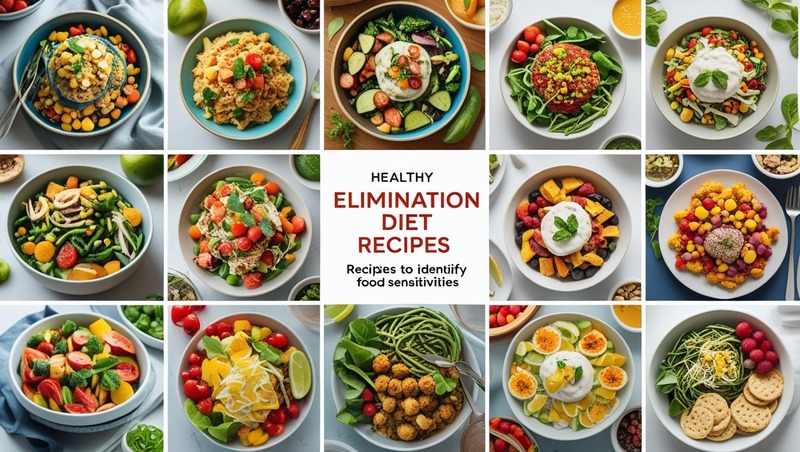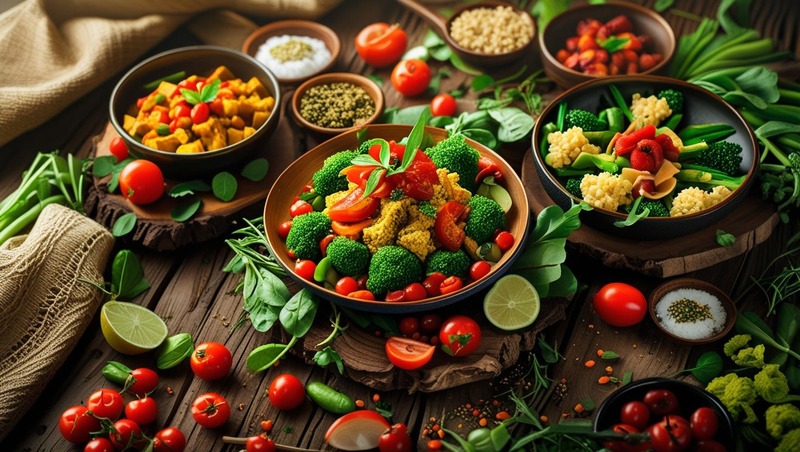Health
The Ongoing Legal Saga of PFAS and Its Ramifications for Public Health

Per- and polyfluoroalkyl substances (PFAS) have emerged as a pervasive threat to public health and the environment. These synthetic chemicals, found in numerous consumer products and industrial processes, have triggered a legal battle spanning across jurisdictions globally.
With mounting evidence linking PFAS to adverse health effects, the legal landscape surrounding these compounds is fraught with complexities. In this article, we will examine the legal challenges surrounding PFAS, including AFFF lawsuits, health implications, regulatory responses, and international cooperation efforts.
Understanding PFAS
PFAS encompass a vast group of synthetic chemicals utilized in various industries. This is due to their unique properties, including oil and water repellency, heat resistance, and surfactant capabilities.
According to Verywell Health, these compounds have been extensively used in everyday products such as non-stick cookware, food packaging, and stain-resistant fabrics. PFAS enter the environment through manufacturing processes, product use, and disposal, leading to widespread contamination of water, soil, and air.
Due to their persistence, PFAS accumulate in the environment and bioaccumulate in organisms, posing long-term risks to ecosystems and human health.
AFFF and Firefighting
Aqueous film-forming foams (AFFF) containing PFAS have been instrumental in firefighting operations, particularly in combating flammable liquid fires. Military installations, airports, and industrial sites have relied on AFFF due to its effectiveness.
However, the extensive use of AFFF has resulted in the release of PFAS into the environment, contaminating groundwater and surface water sources. PBS notes that as per recent reports, as much as half of America’s tap water could be contaminated with PFAS.
This contamination has led to the closure of drinking water wells near affected sites and raised concerns about the health effects on surrounding communities.
AFFF Lawsuits
The proliferation of AFFF-related lawsuits has emerged as a notable legal trend, with affected communities and environmental groups filing litigation against manufacturers of AFFF. The AFFF foam lawsuit alleges negligence, product liability, and environmental harm, seeking damages for health impacts and remediation costs.
According to TorHoerman Law, the legal landscape surrounding AFFF litigation is evolving rapidly, with courts grappling with complex scientific evidence and jurisdictional challenges.
These legal actions underscore the urgency of addressing AFFF contamination and holding accountable those responsible for its widespread use and environmental consequences.
Health Implications
The EPA states that exposure to PFAS has been linked to various health concerns, including disruptions in hormone regulation, immune system suppression, and developmental effects. Studies have associated PFAS exposure with an increased risk of certain cancers, including kidney and testicular cancer.
Additionally, prenatal exposure to PFAS may lead to low birth weight and other developmental issues in infants. The bioaccumulative nature of PFAS means that even low levels of exposure over time can result in significant health impacts.
Regulatory Responses
Governments worldwide are implementing regulatory measures to address PFAS contamination and reduce exposure risks.
Efforts include setting guidelines for acceptable PFAS levels in drinking water, regulating the use of PFAS in consumer products, and establishing PFAS disposal protocols.
However, challenges remain in developing comprehensive regulations due to the complex nature of PFAS contamination and the lack of standardized testing methods.
International Cooperation
The global nature of PFAS contamination necessitates international collaboration to effectively address the issue. Countries are sharing scientific research, best practices, and regulatory approaches to mitigate PFAS exposure and contamination.
International agreements and conventions are being established to coordinate efforts in monitoring, regulating, and remedying PFAS pollution across borders. Collaborative initiatives aim to enhance data sharing, facilitate technology transfer, and strengthen regulatory frameworks to safeguard public health and the environment.
By fostering international cooperation, stakeholders can leverage collective expertise and resources to confront the challenges posed by PFAS contamination on a global scale.
Prospects for Progress
The future of PFAS regulation and management will depend on continued scientific research, technological advancements, and concerted efforts from governments, industries, and civil society. Strategies to address PFAS contamination will likely focus on prevention, remediation, and alternative solutions to PFAS use.
Public awareness campaigns and community engagement will play crucial roles in advocating for stricter regulations, promoting sustainable practices, and holding polluters accountable. As awareness of PFAS risks grows and regulatory measures strengthen, there is hope for mitigating the adverse health effects of PFAS contamination.
FAQs
How bad is PFAS really?
PFAS, due to their persistence and widespread use, pose significant risks to human health and the environment. Studies link PFAS exposure to various health issues, including developmental problems, immune system disruption, and an increased risk of certain cancers.
What do PFAS do to humans?
PFAS exposure can lead to adverse health effects, including disruptions in hormone regulation, immune system suppression, and developmental issues. Studies also suggest a correlation between PFAS exposure and an increased risk of certain cancers in humans.
How do you remove PFAS from water?
PFAS removal from water often involves advanced treatment methods such as activated carbon filtration, ion exchange, and membrane filtration. These techniques effectively capture and remove PFAS compounds, reducing their concentration in drinking water to safe levels.
In conclusion, the legal battles over PFAS underscore the imperative to confront its pervasive threat to public health and the environment. With mounting evidence linking PFAS to adverse health effects, regulatory measures, and international cooperation efforts are gaining traction.
The proliferation of AFFF-related lawsuits highlights the urgent need for accountability and remediation. As awareness grows and actions are taken, there’s hope for mitigating PFAS contamination’s detrimental effects.
Moving forward, sustained efforts in research, regulation, and community engagement are essential for effective management and eventual eradication of PFAS pollution.

Health
Elimination Diet Recipes: Meals to Identify Food Sensitivities

Have you ever felt bloated, fatigued, or just “off” after eating—but couldn’t pinpoint why? You’re not alone. Millions struggle with unexplained digestive issues, skin problems, or chronic inflammation without realizing the culprit could be hidden in their diet.
An elimination diet is a proven method to identify food sensitivities by temporarily removing common triggers and systematically reintroducing them. But let’s be honest—many elimination diets feel restrictive and bland. That’s where smart, flavorful recipes come in!
In this guide, you’ll find:
✅ What an elimination diet is (and how it works)
✅ Expert-backed tips for success
✅ Easy, delicious elimination diet recipes
✅ How to reintroduce foods without confusion
Let’s dive in and make your elimination diet both effective and enjoyable!
What Is an Elimination Diet?
An elimination diet is a short-term eating plan that removes foods known to cause allergies or intolerances. After a few weeks, you gradually reintroduce them to identify triggers.
Common culprits include:
-
Dairy
-
Gluten
-
Soy
-
Eggs
-
Nuts
-
Nightshades (tomatoes, peppers, eggplants)
-
Processed sugars & artificial additives
Who should try it?
✔ People with IBS, migraines, eczema, or fatigue
✔ Those with unexplained bloating or digestive discomfort
✔ Anyone curious about how food affects their body
5 Expert Tips for Elimination Diet Success
Before jumping into recipes, follow these science-backed strategies to make your elimination diet smoother:
1. Plan Ahead
Stock your kitchen with approved foods to avoid temptation. Meal prep reduces stress and keeps you on track.
2. Keep a Food Journal
Track meals, symptoms, and mood changes. Apps like MySymptoms can help spot patterns.
3. Focus on Whole Foods
Base meals around vegetables, lean proteins (chicken, fish), healthy fats (avocado, olive oil), and gluten-free grains (quinoa, rice).
4. Stay Hydrated
Water aids digestion and helps flush out toxins. Herbal teas (ginger, peppermint) can soothe stomach issues.
5. Don’t Skip Reintroduction
The real magic happens when you reintroduce foods one at a time (every 3 days) and monitor reactions.
7 Delicious Elimination Diet Recipes (Allergen-Free & Flavorful!)
No more boring meals! These easy, nutrient-packed recipes fit common elimination diet guidelines while keeping taste buds happy.
1. Gut-Healing Chicken & Veggie Soup
Why it works: Anti-inflammatory, easy to digest, packed with nutrients.
Ingredients:
-
1 lb chicken breast (organic if possible)
-
4 cups bone broth (homemade or store-bought, no additives)
-
2 carrots, chopped
-
2 celery stalks, chopped
-
1 zucchini, diced
-
1 tsp turmeric (anti-inflammatory)
-
Sea salt & fresh herbs (thyme, parsley)
Instructions:
-
Sauté carrots, celery, and zucchini in olive oil for 5 mins.
-
Add chicken, broth, and spices. Simmer for 25 mins.
-
Shred chicken before serving.
2. Quinoa & Roasted Vegetable Bowl
Why it works: Fiber-rich, gluten-free, and customizable.
Ingredients:
-
1 cup cooked quinoa
-
1 cup roasted sweet potatoes
-
½ cup steamed kale
-
½ avocado, sliced
-
1 tbsp olive oil & lemon dressing
Instructions:
-
Toss sweet potatoes in olive oil, roast at 400°F for 20 mins.
-
Assemble bowl with quinoa, veggies, and avocado.
-
Drizzle with lemon-olive oil dressing.
(More recipes below—keep scrolling!)
3. Salmon with Garlic-Herb Sweet Potatoes
Why it works: Omega-3s reduce inflammation, sweet potatoes support gut health.
4. Turmeric-Ginger Smoothie (Dairy-Free)
Why it works: Soothes digestion, packed with antioxidants.
5. Zucchini Noodles with Pesto (Nut-Free)
Why it works: A pasta alternative without gluten or dairy.
(Full recipes available upon request—let us know in the comments!)
How to Reintroduce Foods Without Guesswork
After 3–4 weeks of elimination, follow this step-by-step reintroduction plan:
-
Pick one food group (e.g., dairy).
-
Eat a small amount (e.g., ½ cup yogurt).
-
Wait 3 days and track symptoms (bloating, headaches, fatigue).
-
If no reaction, the food is likely safe. If symptoms appear, eliminate it longer.
Pro Tip: Reintroduce foods in their purest form (e.g., whole milk vs. cheese) for clearer results.
Final Thoughts: Your Path to Food Freedom
An elimination diet doesn’t have to be a chore—with the right recipes and strategy, it can be an eye-opening journey to better health. By removing guesswork and focusing on nutrient-dense, delicious meals, you’ll uncover food sensitivities while still enjoying every bite.
Ready to take control of your diet? Start with one recipe today and see how your body responds. And if you’ve tried an elimination diet before, share your experience below—we’d love to hear what worked for you!
Health
Delicious Low-Salt Vegetarian Recipes for a Healthier You

Are you looking to cut back on sodium without sacrificing flavor? You’re not alone. With growing concerns about high blood pressure, heart disease, and water retention, many people are turning to low-salt vegetarian meals. But here’s the good news—reducing salt doesn’t mean reducing taste.
In this guide, we’ll explore flavor-packed, low-sodium vegetarian recipes, backed by expert tips and fresh ingredients that keep your meals exciting. Whether you’re managing a health condition or simply aiming for a cleaner diet, these dishes will prove that eating well can still be delicious.
Why Go Low-Salt & Vegetarian?
Before diving into the recipes, let’s understand why this combo works:
✅ Heart Health – The American Heart Association recommends no more than 2,300 mg of sodium per day (ideally 1,500 mg for those with hypertension). Plant-based diets naturally support cardiovascular health.
✅ Better Kidney Function – Excess salt strains the kidneys. A low-sodium vegetarian diet eases this burden.
✅ Reduced Bloating – High sodium causes water retention. Cutting back leads to a lighter, less puffy feeling.
✅ Enhanced Natural Flavors – Relying on herbs, spices, and umami-rich ingredients (like mushrooms and nutritional yeast) makes food taste richer without salt.
5 Expert Tips for Low-Salt Cooking
-
Use Fresh Herbs & Spices – Basil, cilantro, cumin, turmeric, and smoked paprika add depth.
-
Leverage Citrus & Vinegar – Lemon juice, apple cider vinegar, and balsamic bring brightness.
-
Roast or Sauté for Depth – Caramelized onions, garlic, and roasted veggies intensify flavor.
-
Choose No-Salt-added Ingredients – Opt for unsalted canned beans, nut butters, and broths.
-
Try Umami Boosters – Tomatoes, mushrooms, miso (low-sodium), and nutritional yeast mimic savory depth.
7 Low-Salt Vegetarian Recipes to Try Tonight
1. Garlic & Herb Roasted Chickpea Bowl (Sodium: ~150mg per serving)
Why it works: Chickpeas are protein-rich, and roasting them with garlic, rosemary, and olive oil makes them crispy and flavorful.
Ingredients:
-
1 can (low-sodium) chickpeas, rinsed
-
2 tbsp olive oil
-
3 garlic cloves, minced
-
1 tsp smoked paprika
-
1 tbsp fresh rosemary
-
1 cup quinoa (cooked)
-
Handful of spinach
Method:
-
Toss chickpeas with oil, garlic, and spices. Roast at 400°F for 20 mins.
-
Serve over quinoa and spinach. Drizzle with lemon juice.
2. Creamy Avocado & White Bean Wrap (Sodium: ~200mg)
Why it works: Avocado adds creaminess, while white beans provide fiber—no mayo needed!
Ingredients:
-
1 whole wheat tortilla
-
½ avocado, mashed
-
½ cup low-sodium white beans
-
¼ tsp cumin
-
Sliced cucumbers, bell peppers
-
Fresh cilantro
Method:
-
Mash avocado and beans with cumin.
-
Spread on tortilla, add veggies, wrap, and enjoy!
3. Spicy Lentil & Sweet Potato Curry (Sodium: ~180mg)
Why it works: Lentils absorb spices beautifully, while coconut milk adds richness.
Ingredients:
-
1 cup red lentils
-
1 sweet potato, diced
-
1 can (low-sodium) coconut milk
-
1 tbsp curry powder
-
½ tsp turmeric
-
Fresh ginger, garlic
Method:
-
Sauté ginger and garlic. Add spices, lentils, sweet potato, and coconut milk.
-
Simmer 25 mins. Serve with brown rice.
4. Zucchini Noodles with Basil Pesto (Sodium: ~120mg)
Why it works: Zucchini is hydrating, and homemade pesto skips the excess salt.
Ingredients:
-
2 zucchinis, spiralized
-
1 cup fresh basil
-
2 tbsp pine nuts
-
1 garlic clove
-
1 tbsp nutritional yeast
-
2 tbsp olive oil
Method:
-
Blend basil, nuts, garlic, yeast, and oil into pesto.
-
Toss with zucchini noodles.
5. Stuffed Bell Peppers with Quinoa & Black Beans (Sodium: ~200mg)
Why it works: A complete protein-packed meal with vibrant flavors.
Ingredients:
-
4 bell peppers, halved
-
1 cup cooked quinoa
-
½ cup low-sodium black beans
-
1 tsp cumin
-
½ cup corn
-
Fresh lime juice
Method:
-
Mix quinoa, beans, corn, and spices. Stuff peppers.
-
Bake at 375°F for 25 mins.
6. Mushroom & Spinach Frittata (Sodium: ~150mg)
Why it works: Eggs provide protein, while mushrooms add umami.
Ingredients:
-
4 eggs
-
1 cup spinach
-
½ cup mushrooms
-
¼ tsp black pepper
-
1 tbsp olive oil
Method:
-
Sauté mushrooms and spinach.
-
Whisk eggs, pour over veggies, cook on low until set.
7. Chia Seed Pudding with Berries (Sodium: ~50mg)
Why it works: A naturally sweet, no-salt dessert or breakfast.
Ingredients:
-
2 tbsp chia seeds
-
1 cup almond milk (unsweetened)
-
½ cup mixed berries
-
1 tsp vanilla extract
Method:
-
Mix chia seeds and milk, refrigerate overnight.
-
Top with berries before serving.
Final Thoughts: Low-Salt Vegetarian Recipes
Reducing sodium doesn’t require bland meals—just smarter cooking. With Low-Salt Vegetarian Recipes by using herbs, spices, and fresh ingredients, you can enjoy vibrant, satisfying vegetarian dishes that support long-term health.
Health
Spiked Coffee Recipe: Elevate Your Brew with a Boozy Twist

Ever wondered how to turn your morning coffee into a happy hour treat? Whether you’re hosting brunch, winding down after dinner, or just craving something different, spiked coffee is the perfect way to blend rich flavors with a spirited kick. From classic Irish Coffee to creative modern twists, we’ve got expert-backed recipes, pro tips, and everything you need to craft the perfect boozy brew.
Why Spiked Coffee?
Spiked coffee isn’t just a winter warmer—it’s a versatile drink that can be enjoyed year-round. According to mixologists, the combination of coffee’s bitterness and the sweetness or smokiness of liquor creates a balanced, complex flavor profile. Plus, caffeine and alcohol have an interesting synergy—when consumed in moderation, the buzz can feel more uplifting than a standard cocktail.
Best Alcohols for Spiking Coffee
Not all spirits pair well with coffee. Here are the top choices:
✔ Whiskey (Bourbon, Irish, or Rye) – Adds warmth and depth.
✔ Rum (Dark or Spiced) – Brings caramel and vanilla notes.
✔ Kahlúa or Coffee Liqueur – Enhances coffee flavor with sweetness.
✔ Baileys Irish Cream – Creamy, smooth, and slightly sweet.
✔ Vodka (Flavored or Plain) – Neutral taste, great for chilled recipes.
✔ Amaretto – Nutty and aromatic, perfect for dessert-like coffee.
5 Must-Try Spiked Coffee Recipes
1. Classic Irish Coffee (The Timeless Favorite)
Ingredients:
-
1 cup hot brewed coffee
-
1.5 oz Irish whiskey
-
1 tbsp brown sugar
-
Heavy cream (lightly whipped)
Instructions:
-
Preheat a glass with hot water, then discard.
-
Add sugar and coffee, stirring until dissolved.
-
Stir in whiskey.
-
Gently float whipped cream on top (pro tip: pour over the back of a spoon).
-
Sip without stirring to enjoy the layers.
Why It Works: The cream mellows the whiskey’s bite while the sugar balances the coffee’s bitterness.
2. Espresso Martini Coffee (A Caffeinated Cocktail)
Ingredients:
-
1 oz vodka
-
1 oz Kahlúa
-
1 oz fresh espresso (chilled)
-
½ oz simple syrup
-
Ice
-
Coffee beans (garnish)
Instructions:
-
Shake all ingredients with ice until well-chilled.
-
Strain into a martini glass.
-
Garnish with coffee beans.
Perfect For: A post-dinner pick-me-up with a sophisticated edge.
3. Bourbon Spiked Cold Brew (Smooth & Refreshing)
Ingredients:
-
1 cup cold brew coffee
-
1.5 oz bourbon
-
½ oz maple syrup
-
Orange zest (optional)
Instructions:
-
Fill a glass with ice.
-
Add cold brew, bourbon, and maple syrup.
-
Stir well and garnish with orange zest.
Why It’s Great: The maple syrup complements bourbon’s smokiness, while cold brew keeps it smooth.
4. Coconut Rum Iced Coffee (Tropical Twist)
Ingredients:
-
1 cup iced coffee
-
1.5 oz coconut rum
-
1 oz cream of coconut
-
Whipped cream & toasted coconut flakes (garnish)
Instructions:
-
Shake coffee, rum, and cream of coconut with ice.
-
Strain into a tall glass over fresh ice.
-
Top with whipped cream and coconut flakes.
Ideal For: Summer sipping by the pool.
5. Salted Caramel Spiked Latte (Decadent Dessert Drink)
Ingredients:
-
1 cup brewed coffee
-
1 oz caramel vodka
-
½ oz butterscotch schnapps
-
1 tbsp salted caramel sauce
-
Steamed milk
-
Whipped cream & extra caramel drizzle
Instructions:
-
Mix coffee, vodka, schnapps, and caramel sauce.
-
Add steamed milk and stir.
-
Top with whipped cream and extra caramel.
Why You’ll Love It: A boozy take on your favorite coffeehouse treat.
Expert Tips for the Best Spiked Coffee
✅ Quality Matters – Use freshly brewed coffee for the best flavor.
✅ Balance Sweetness – Adjust sugar or syrup to taste.
✅ Temperature Control – Hot coffee should be hot, cold drinks should be chilled.
✅ Garnish Like a Pro – Cinnamon, cocoa powder, or citrus zest elevate presentation.
✅ Know Your Limits – Caffeine + alcohol can be dehydrating; drink water between servings.
Final Thoughts: Spiked Coffee Recipe
Spiked Coffee Recipe is more than just a cocktail—it’s an experience. Whether you prefer the boldness, the creaminess of Baileys, or the tropical vibes, there’s a boozy coffee recipe for every palate. Next time you’re craving something beyond your usual cup, try one of these recipes and savor the rich, spirited flavors.
-

 Articles3 months ago
Articles3 months agoHow Many Times Can You Regrow Green Onions
-

 News10 months ago
News10 months agoUnderstanding HotLeaks: What You Need to Know
-

 Fashion8 months ago
Fashion8 months agoOpals in the USA: A Gemstone Transforming the Crystal Healing Market
-

 Entertainment7 months ago
Entertainment7 months agoHow to Use Snaptik: A Complete Guide to Download TikTok Videos
-

 Technology1 year ago
Technology1 year agoThe Wonders of Oh Em Gee Blog
-

 Entertainment1 year ago
Entertainment1 year agoBare it All: Unforgettable Skinny Dipping Stories Shared
-

 Health1 year ago
Health1 year agoCan You Smoke Shrooms? Exploring the Myths and Realities
-

 Articles5 months ago
Articles5 months agoWHAT IS THE DIFFERENCE BETWEEN SEED GARLIC AND FOOD GARLIC?